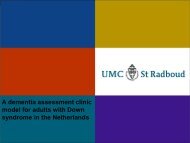here - SBS Documents
here - SBS Documents
here - SBS Documents
You also want an ePaper? Increase the reach of your titles
YUMPU automatically turns print PDFs into web optimized ePapers that Google loves.
John Anthony Milliss delivered by<br />
Penny Robertson<br />
For true inclusion to occur, teachers need to work on ways the curriculum can be<br />
adapted (Conway, 2005, p.119) to meet the needs for all students. Shaddock, Giorcelli<br />
and Smith (2007, p.13) believe that quality teaching and supported learning will occur<br />
in the presence of respectful tasks’ and scaffolding’. They believe that with the<br />
availability of these tasks in a classroom setting that limited adaptions would need to<br />
be necessary. Giangrecco (2007, p.36) also states that classrooms should operate with<br />
a multi level curriculum and w<strong>here</strong> curriculum overlapping occurs. Scaffolding is an<br />
example of the multi-level curriculum and is a strategy that allows all students to<br />
access the curriculum.<br />
Teachers need to develop a learning profile of all of their students. These profiles will<br />
include preferred learning style, a child’s interests / strengths, what assistance or<br />
adjustments are needed to accommodate the individual in becoming successful.<br />
From these profiles, learning and interest groups can be created to promote<br />
cooperative learning and also w<strong>here</strong> peer tutoring can be utilized (Arthur-Kelley,<br />
2005, p.185). Teachers need to see their class as a group of individuals with different<br />
learning styles and varying levels of knowledge. Once this occurs teachers can use<br />
this information to inform decisions on how to differentiate the curriculum.<br />
The classroom teacher is the main facilitator of change in a differentiated classroom.<br />
Once they are in the correct mindset and adaptive to change than differentiation of the<br />
curriculum will occur. Arthur Kelley (2005, p.168-169) identifies three interrelated<br />
themes in a supportive classroom environment. Issues in classroom management,<br />
classroom climate and the communication process need to be addressed if students are<br />
to learn in a rich environment.<br />
An important characteristic of any inclusive classroom is the classroom climate.<br />
Shaddock, Giorcelli and Smith (2007, p.11) state that teachers need to set positive<br />
standards for behaviour and ensure the tone of the class is supportive and affirming<br />
for all students. The physical environment may need to be adapted to facilitate greater<br />
access to the curriculum for some students.












